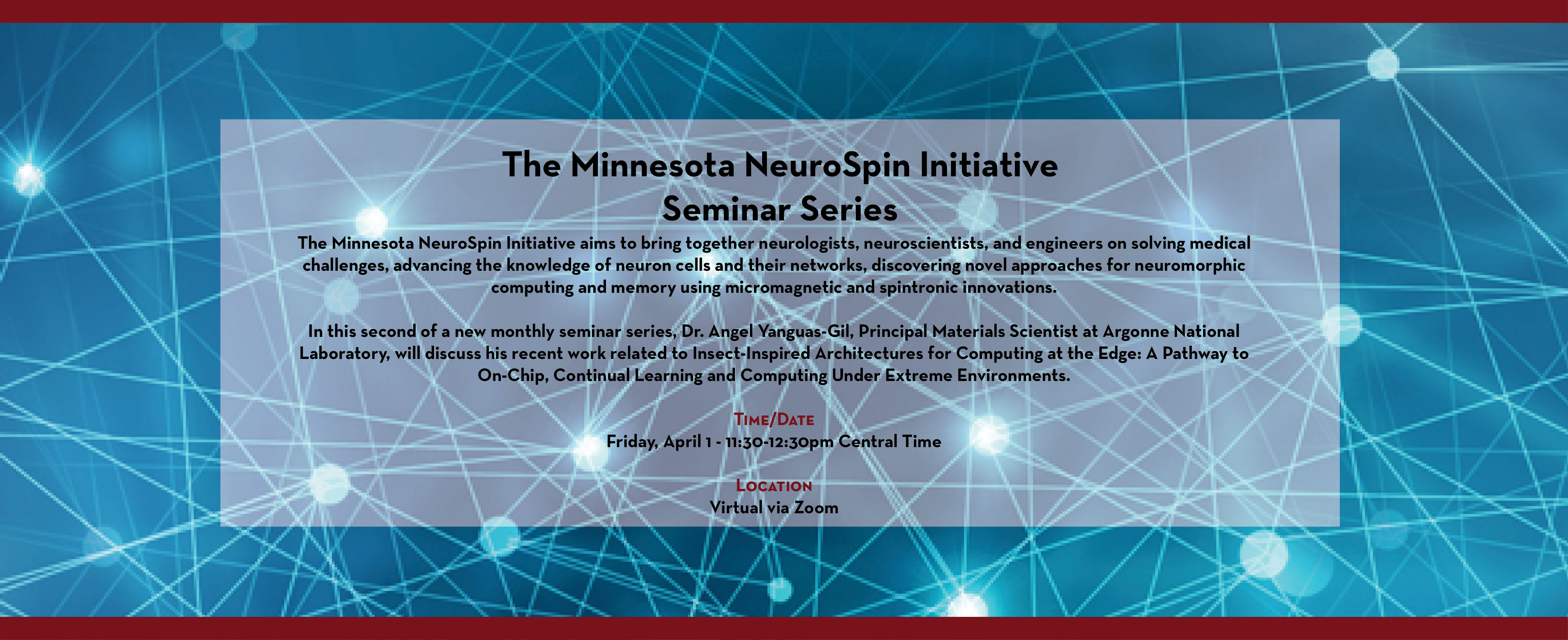
The Minnesota NeuroSpin Initiative is pleased to invite you to its second seminar in a new series. On April 1, Dr. Angel Yanguas-Gil, Principal Materials Scientist at Argonne National Laboratory, will discuss his recent work related to:
Insect-Inspired Architectures for Computing at the Edge: A Pathway to On-Chip, Continual Learning and Computing Under Extreme Environments
Neuromorphic computing has long been explored as an alternative to conventional von Neumann architectures due to their tight integration between computing and memory. However, recently there has been a strong interest in brain-inspired architectures as an approach to deploy AI at the edge with capabilities that go beyond those of conventional deep learning approaches.
In this presentation, Dr. Angel Yanguas-Gil will explore how his team approaches the design of this type of architecture using the insect brain as a model system. Starting from neuroscience-inspired algorithms, they adapt the structure of the learning center of the insect brain, the mushroom body, for continual and lifelong learning applications. Their results show that these architectures can outperform conventional machine learning algorithms in standard continual learning benchmarks, where a system is required to sequentially learn a series of tasks, without the need to store any past data. They then explore two possible implementations based on spiking neural networks, one based on Intel’s neuromorphic chip Loihi, and one based on emergent materials. For the latter case, they can identify what ideal properties memristors should have in order to enable efficient real time, on chip learning. Their results show that the desired properties are very different from those traditionally assumed for in-memory computing approaches. Moreover, they explore the impact of multiple types of encoding, such as periodic, single, and a random stream driven by spin dice, on the overall accuracy. Finally, they briefly describe how we can apply these concepts to the classification of digitally modulated RF signals. Using a combination of new ALD materials and existing high temperature digital implementations, we show how there is a feasible pathway to carry out non-trivial computing such as the processing of RF signals at temperatures exceeding 300 C.
Seminar Details
Seminar Host
- Prof. Jian-Ping Wang, University of Minnesota
Seminar Speaker
- Dr. Angel Yanguas-Gil, Argonne National Laboratory
Date and Time
- April 1, 2022
- 11:30am-12:30pm CT
Location
Virtual Via Zoom - Link will be provided upon registration

Dr. Yanguas-Gil is a Principal Materials Scientist at Argonne National Laboratory, where he carries out research in the areas of materials for microelectronics and energy application, and in neuromorphic computing, with a focus on developing energy-efficient approaches to sensing and computing inspired on the insect brain. Angel obtained his PhD in Physics from the University of Seville, Spain in 2006, where his research focused on plasma physics and the fundamentals of thin film growth. After three years as a postdoctoral researcher at Ruhr University in Germany and the University of Illinois at Urbana-Champaign, he joined Argonne National Laboratory in 2009. He became a Fellow of the Northwestern Argonne Institute for Science and Engineering at Northwestern University in 2013. He is currently the Chair of the Thin Film Division of the American Vacuum Society, he has been Chair of the Prairie Section of the American Physical Society.